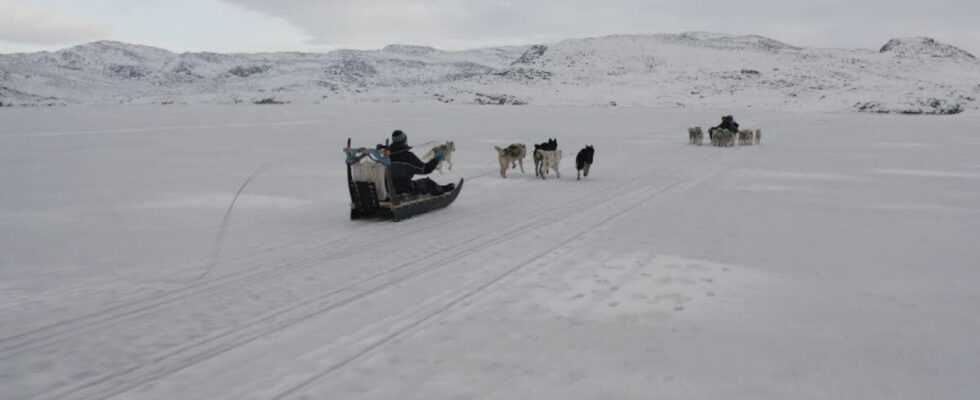“I started with the question: what is life at the end of the world? “says the director. The documentary Greenland, life at the end of the worldby Sarah Fournier, is broadcast this Sunday evening in “Enquête Exclusive” on M6.
It takes us to Nuuk, the northernmost capital in the world, but also to Oqaatsut, a tiny village of 35 inhabitants who live without running water, or even aboard an icebreaker boat that transports tourists from all over the world. .
A village at the end of the world
It is in Oqaatsut that the change of scenery is the most complete. More than 600 kilometers north of the capital, this village has 35 inhabitants and many sled dogs. The single classroom accommodates only six students, all levels combined. The inhabitants do not have running water and must share the two showers which are at the town hall. The majority of them are fisherman and reindeer and seal hunters. Sarah Fournier met Arnold, 14, while he was training to drive his sled dogs following the teaching of his father.
Immersion with lifeguards by air
Oqaatsut does not have a doctor and even less a hospital. So in case of serious injury, here as in all the rest of this territory, the least densely populated in the world, it is by air that the injured must be transported to the hospital in Nuuk. Sometimes, weather conditions prevent taking off for several days in a row.
“For us, going to the hospital is not a challenge. There, pregnant women are forced to go there a month before, because they can’t be evacuated in the middle of labor,” says Sarah Fournier. While she and her team were following the rescue in Nuuk, a woman needed to be rushed to hospital after being stabbed. “Suddenly, everyone is excited. There was a problem with the plane they were supposed to take, so they changed. All the tourists had to get out of the plane, they removed several seats to install the stretcher. They adapt very quickly. »
The filming of the documentary also had to adapt to the weather, which makes travel very complicated. “It’s one of the few places where I felt it was still really wild. It is nature that decides, and it can very quickly become dangerous. Even getting around the village and filming its inhabitants turned into an obstacle course for the journalist and her team: they had to manage to operate the cameras in temperatures of several tens of negative degrees and move around in the snow or on the ice, sometimes fragile. “It rather made them laugh to see us struggle! »
Grow Vegetables on the Frozen Continent
In Nuuk, the capital, life is more comfortable and more modern, even if it still requires adapting to the extreme cold and the sun which only rises for a few hours in winter. In the supermarkets, all the fresh products come from Europe by ship. Nothing grows in permafrost. But Sarah Fournier met an entrepreneur who designed a hydroponic farm, heated and lit, to grow salads on the frozen continent.
In general, the documentary focuses on innovations, festive places and the ambitions of young people. While Greenland has a suicide rate eight times higher than the world average, and the team also filmed police officers forced to guard the exits of bars in the middle of the night to prevent drunk people from freezing to death if they fail to return home, Sarah Fournier preferred to show all these other unusual aspects of life near the North Pole that we know less about.
Moreover, the frozen continent fascinates more and more and attracts tourists, like those encountered at the beginning of the documentary on the icebreaker boat. In Oqaatsut, the reporting team even stayed in a guesthouse, recently opened in the small village. Perhaps this documentary will make some people want to try the stay…
A territory between two cultures
Among the people interviewed in the documentary, some speak Danish and others Greenlandic. Often, conversations switch from one language to another. Sarah Fournier also evokes this duality between the descendants of the colonists and those of the colonized.
Today, young Greenlanders show their pride in their indigenous origins, as is the case of a tattoo artist encountered in the documentary. She wears the patterns of her ancestors on her face, and stitches by hand in the traditional way.
“Exclusive inquiry” : Greenland, life at the end of the worlddirected by Sarah Fournier, Sunday May 15 at 11:15 p.m. on M6.
